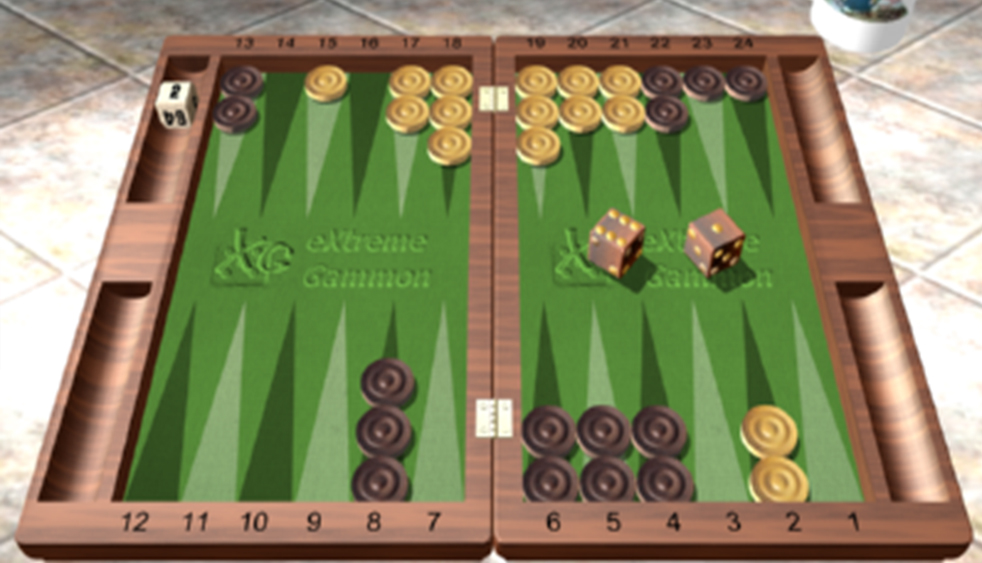Brown trails Yellow 3-4/5, and must play 6-1
This week’s problem comes from a critical moment during the last game of a 5-point match. Brown has survived the Crawford game and immediately cubed in this game making this effectively a double-match-point or “DMP”. Whoever wins this game will win the match and therefore gammons and backgammons become irrelevant, and the cube serves no further purpose. With this 6-1, Brown has many interesting choices:
22/15*
This play could be very tempting as it accomplishes two important objectives, escaping a checker from behind yellow’s five prime and hitting a checker. However, it abandons the important 22-point anchor for the moment.
23/16
Escaping a checker and retaining the 22-point anchor has merits but it does leave a direct 1-shot for yellow to hit on the 16-point.
24/23,13/7
This is the imaginative play which creates a second backgame anchor on the 22 point and slots the prime. It may look attractive for the moment, but brown simply doesn’t have the proper timing to play this type of game. Backgames can generate many shots during the opponent’s bear-off but are most effective when the hit checker can be contained. In this case, brown’s front position may be too advanced by the time the shots are generated to exact any real damage to yellow.
13/7,8/7
With the bar point secured, brown traps the two yellow back checkers and still has some time to hold the five-prime with the flexibility of being able to play the extra checker on the mid-point. Brown will now escape yellow’s prime with any six, even at the expense of giving up an anchor. Brown’s prime kills much of yellow’s flexibility and Yellow may be forced to dismantle his own prime without being able to escape the rear checkers. An Extreme Gammon analysis of this position confirms that Brown wins the match at least 10% more often by making his bar point (13/7,8/7) than with any of the alternative plays.

Frank is a two-time winner of the Backgammon World Championship in Monte Carlo and current holder of the title. He is a strategic consultant for professional sports teams, and within the sports betting and gaming industries. His work in decision science, critical thinking and sports analytics has been featured in many major news media outlets including ESPN, NFL Network, the New York Times, Fox Sports, Esquire, the Ringer and Showtime. He proudly serves as the co-director of the San Diego Backgammon Club. Learn more: https://frankfrigo.com/


13/7, 8/7 is my choice.
Well done Jon! Please share your thought process.
Tough problem (which means I got it wrong :). Here’s a followup. Let’s say Brown makes the correct play of 7(2) and Yellow then rolls something benign like 42 (10/4 — even if that’s wrong I think it’s what most would play). Out of the cup comes 44 for Brown. How many ‘reasonable’ candidates are there and which is best?